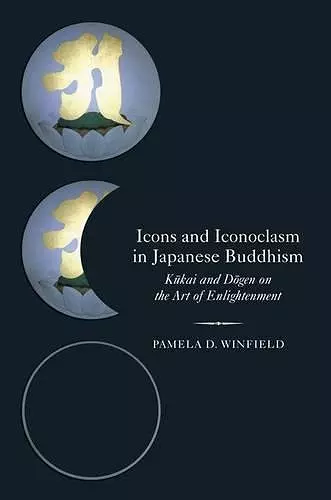Icons and Iconoclasm in Japanese Buddhism
Kukai and Dogen on the Art of Enlightenment
Format:Paperback
Publisher:Oxford University Press Inc
Published:7th Mar '13
Currently unavailable, and unfortunately no date known when it will be back
This paperback is available in another edition too:
- Hardback£115.00was £115.00(9780199753581)

Pamela D. Winfield offers a fascinating juxtaposition and comparison of the thoughts of two pre-modern Japanese Buddhist masters on the role of imagery in the enlightenment experience. Kukai (774-835) believed that real and imagined forms were indispensable to his new esoteric Mikkyo method for ''becoming a Buddha in this very body'' (sokushin jobutsu), yet he deconstructed the significance of such imagery in his poetic and doctrinal works. Conversely, Dogen (1200-1253) believed that ''just sitting'' in Zen meditation without any visual props or mental elaborations could lead one to realize that ''this very mind is Buddha'' (sokushin zebutsu), but he too privileged select Zen icons as worthy of veneration. In considering the nuanced views of Kukai and Dogen, Icons and Iconoclasm in Japanese Buddhism updates previous comparisons of their oeuvres and engages their texts and images together for the first time in two decades. Winfield liberates them from sectarian scholarship, which has long pigeon-holed them into iconographic/ritual vs. philological/philosophical categories, and restores the historical symbiosis between religious thought and artistic expression that was lost in the nineteenth-century disciplinary distinction between religious studies and art history. Winfield breaks new methodological ground by proposing space and time as organizing principles for analyzing both meditative experience as well as visual/material culture and presents a wider vision of how Japanese Buddhists themselves understood the role of imagery before, during, and after awakening.
Ambitious and scholarly... Winfield guides the reader with apparent ease... Icons and Iconoclasm feels like the start of a much broader discussion, not just of art in a conventional sense but also of how we might create, interpret, and inhabit ritual space. * Buddhadharma: The Practioner's Quarterly *
Delightfully instantiates the converging trajectories of art history and Buddhist studies. At this intersection, each is more deeply informed by the other, and both are enriched. Winfield's study not only demonstrates the benefits of this conjunction of fields, but shows that no longer can Buddhist studies ignore art history, nor can art history remain uninformed by Buddhist thought. * Richard K. Payne, Dean and Yehan Numata Professor of Japanese Buddhist Studies, Institute of Buddhist Studies *
Pamela Winfield has written a very interesting and exciting book examining two major Japanese Buddhist thinkers. By focusing on the visual elements in their works in addition to the prominent texts of these giants, Winfield establishes a creative and constructive contrast between Kukai's 'unitive model' stressing non-dual union between the practitioner and ultimate reality and Dogen's 'purgative process' that highlights the individual's own experience of casting aside all distractions. * Steven Heine, editor of Dogen: Textual and Historical Studies *
ISBN: 9780199945559
Dimensions: 156mm x 236mm x 12mm
Weight: 345g
230 pages